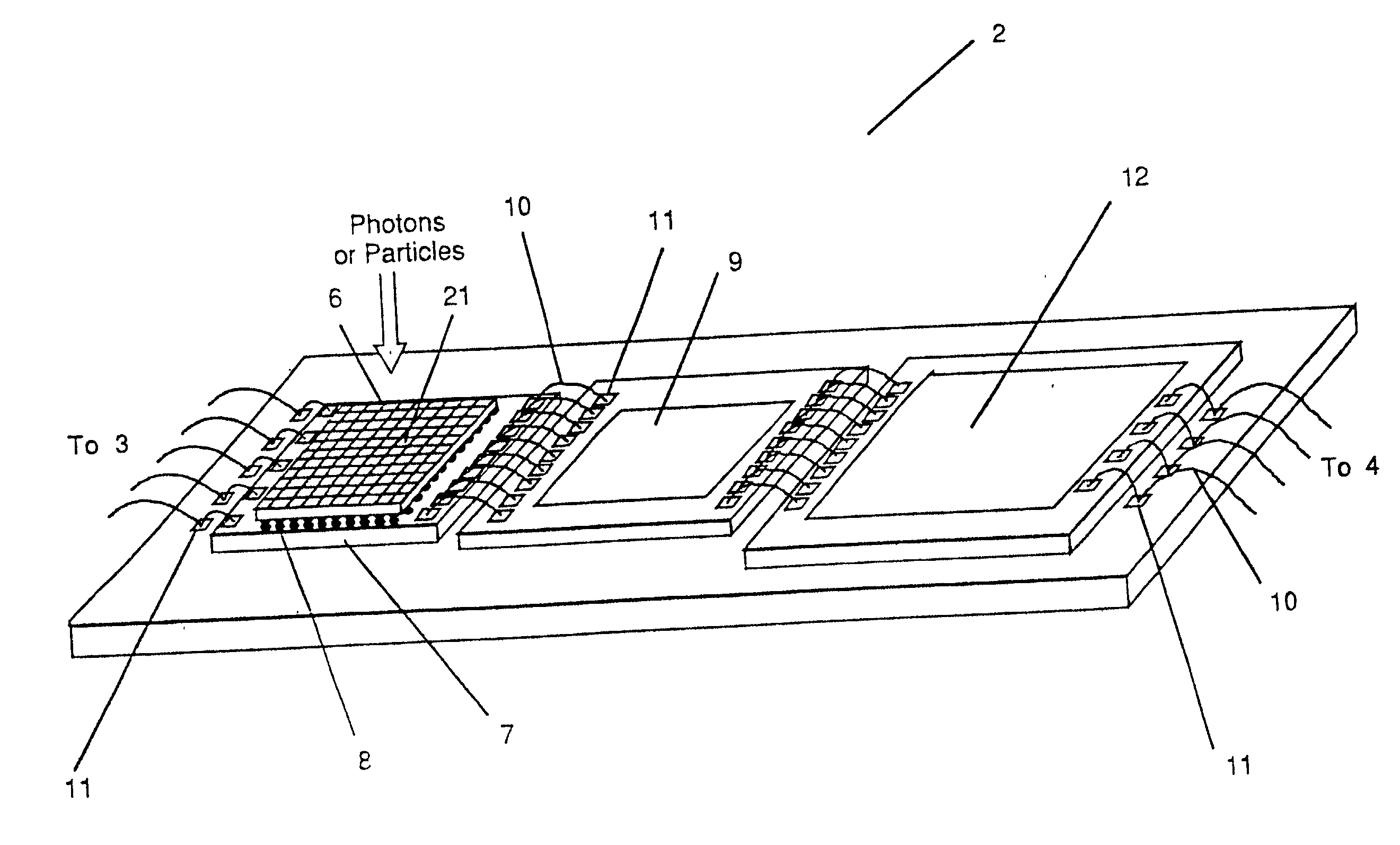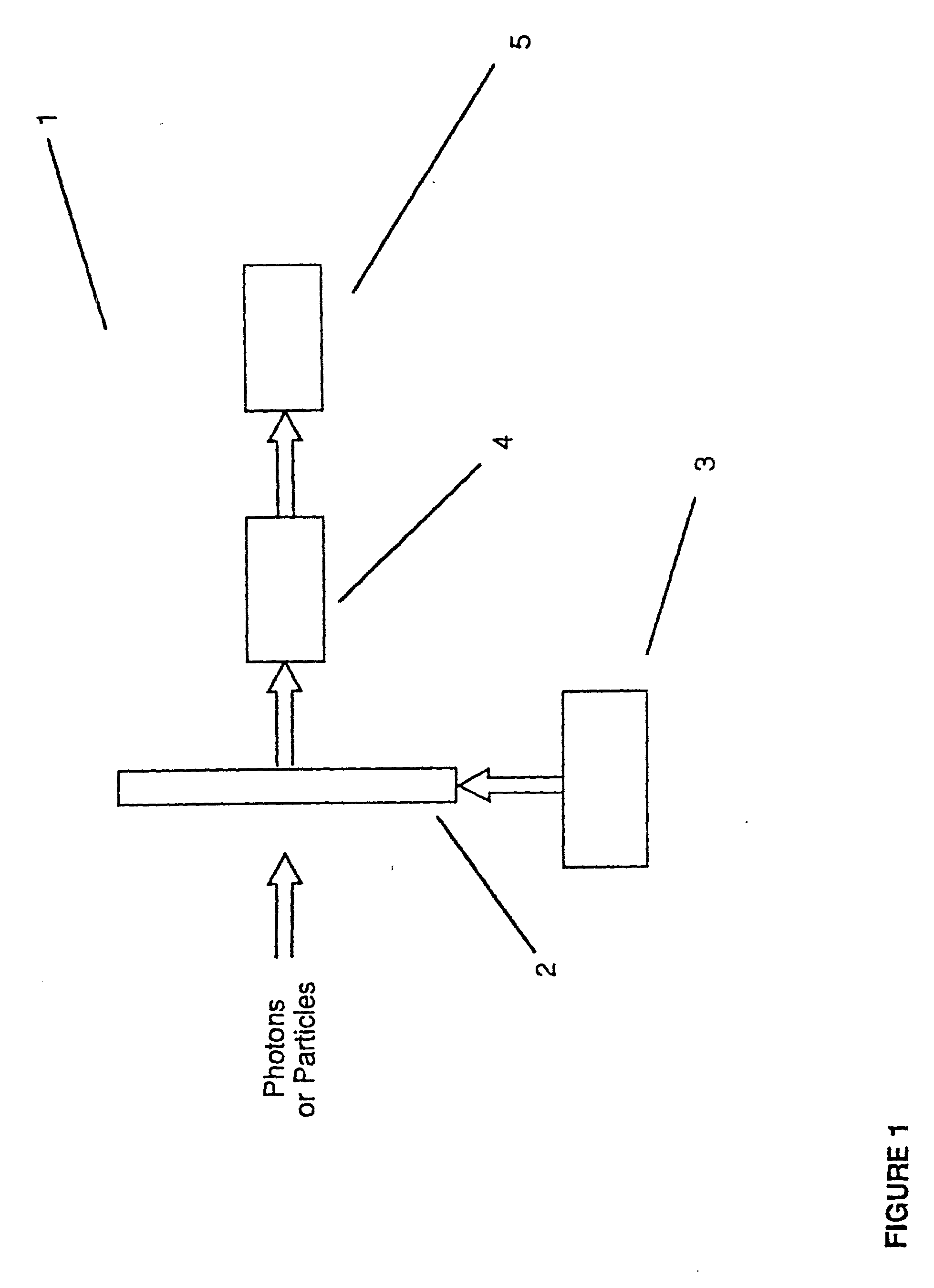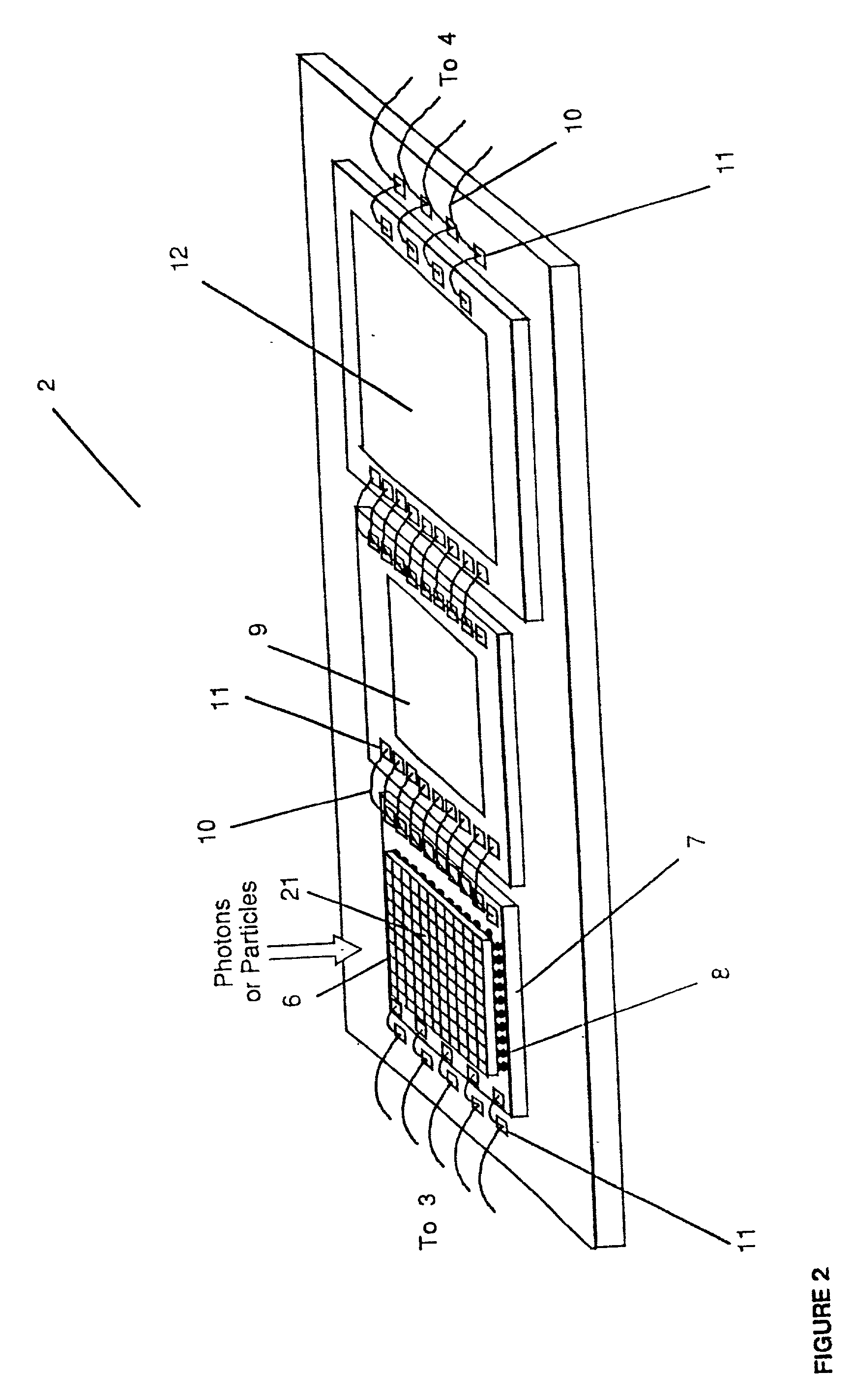High data rate smart sensor
a high data rate, smart sensor technology, applied in the direction of discharge tube main electrodes, instruments, radiation control devices, etc., can solve the problems of large detector array technology, frame rate or count rate limitation, and inability to solve the problem of large detector array,
- Summary
- Abstract
- Description
- Claims
- Application Information
AI Technical Summary
Benefits of technology
Problems solved by technology
Method used
Image
Examples
Embodiment Construction
[0022] A preferred embodiment of the present invention, the High Data Rate Smart Sensor System (HDSS) 1 depicted in FIG. 1 block diagram, is designed to processes data generated by an array of detectors located in a sensor 2. This system 1 is further comprised of sensor drive electronics 3. The HDSS may further be comprised of digitizing and output electronics 4, a digital data processor and display 5.
[0023] One embodiment of the sensor 2 is shown in FIG. 2. It is comprised of a detector array chip 6 connected to a readout array chip Z by bump bonds 8; the readout array chip 7 is connected to an analog correction processor 9 by wire bonds 10 and bond pads 11. Typically the detector array is a PIN diode array made from solid-state materials such as silicon or germanium. The readout array chip may be, alternatively, connected to the analog correction processor by a interconnect chip which is bump bonded to both chips; bump bonds taking the place of wire bonds. The analog correction pr...
PUM
 Login to View More
Login to View More Abstract
Description
Claims
Application Information
 Login to View More
Login to View More - R&D
- Intellectual Property
- Life Sciences
- Materials
- Tech Scout
- Unparalleled Data Quality
- Higher Quality Content
- 60% Fewer Hallucinations
Browse by: Latest US Patents, China's latest patents, Technical Efficacy Thesaurus, Application Domain, Technology Topic, Popular Technical Reports.
© 2025 PatSnap. All rights reserved.Legal|Privacy policy|Modern Slavery Act Transparency Statement|Sitemap|About US| Contact US: help@patsnap.com



